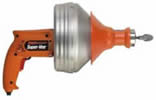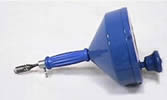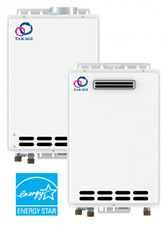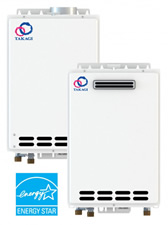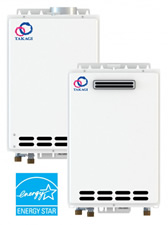Essential Guide to Emergency Home Plumbing Repairs
Handling common home plumbing emergencies can be tricky if you do not know what to expect. Calling a plumber out at any time is expensive, but it seems most of the emergencies that happen with home plumbing systems tend to occur after hours, when the plumber's rates are even higher. Let's take a look at the common plumbing problems that you might encounter as a homeowner that require repair immediately, and how your plumber would handle these problems if you called him out. In many cases, you can take care of these problems yourself, saving a ton of money; in other cases professional help from a plumber is necessary.
Plumbing Emergency: Blocked Drains
One of the most frequently requested service calls that plumbers receive is concerning blocked or clogged drains that back up into the kitchen sink, bath tub, or toilet. When the plumber comes out, he would typically use a drain cleaning cable (plumber's snake) or even a high pressure water jet to clear the line. However, many blocked or clogged drains can be taken care of on your end without calling out a professional. To unclog the drain, you will need a drain cleaner. While products like Drano can work on a simple clog, tougher jobs may require something a bit stronger; Liquid Fire is a great drain cleaner that will literally melt away hair or other objects that are standing in the way of water running freely through your pipes.
Use any drain cleaning or drain clearing product with caution and always read the manufacturer's label and associated warnings regarding use. These chemicals are very caustic and can be lethal if swallowed by children, and the fumes that they emit can also make you very sick, which makes it important that your review and understand the warnings and usage directions for whatever kind of drain opening cleaner you purchase. As a homeowner, you can detect blockages and clogs in your drains early on, which will make your cost to get rid of the problem less. Listen for gurgling noises coming from your plumbing system or watch for drains that are slow to empty and nip the problem in the bud before it becomes a complete clog.
Plumbing Emergency: Hot Water Heater Burst Open
When a hot water heater tank bursts open, or as plumbers say, "splits", the consequences are always very messy. To make matters worse, the early hours of the morning or late at night are the most common times that hot water heater tanks that have corroded finally split open because the water pressure in the tank is highest at this time due to water not being in use. You will need a plumber to turn off the heater and drain the hot water. What you can do: if your hot water heater tank has burst open, you should immediately turn the breaker off that operates the hot water heater. If it is a gas heater, turn off the gas main as well. To prevent this kind of plumbing emergency, you should inspect your tank regularly for corrosion, especially if you have hard water. Also, run hot water into a white bowl and examine its color. Is it clear or rusty? Even slightly rusty water from your hot water tap can indicate that the tank of your hot water heater has deteriorated due to corrosion and should be replaced.
Plumbing Emergency: Leaking or Burst Pipes
A burst or leaking water pipe can cause a lot of damage and be a headache to clean up. Most often, a plumber will need to come out to assess the damage and do the repair of this type of plumbing emergency. What you can before he arrives: shut off the main water valve to prevent further damage.
Many burst pipes occur when it becomes bitterly cold outside and the water inside the pipes expands and has nowhere to go. To avoid this, always take precautions during cold weather by using heat tapes around your pipes that are vulnerable to cold and leave a steady water drip in your home's faucets at night.
Plumbing Emergency: Tap That Will Not Turn Off
While at first glance a tap that cannot be turned off does appear to be a plumbing emergency, this is one problem you can likely manage yourself. First off, turn the water supply to the tap off - usually by getting beneath the sink and turning a shut off valve to the faucet. Oftentimes the tap may need replaced, which many homeowners can do themselves.
|
|




